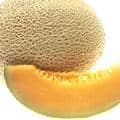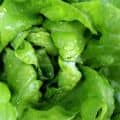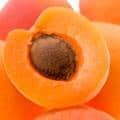Common Plant Compound Found To Reverse Lung Damage Associated With COPD
“Given the high costs, both direct and indirect, associated with COPD, there is an urgent need to identify novel approaches to treat the disease,” said a professor of medicine.
The COPD Epidemic
Chronic Obstructive Pulmonary Disease (COPD) is an umbrella term that includes chronic bronchitis, emphysema, bronchiectasis, and asthma. But it most commonly describes two often overlapping and life-threatening lung diseases: emphysema and chronic bronchitis. COPD is a progressively worsening, debilitating lung disease that adversely affects breathing by obstructing airflow and causing lung tissue damage.COPD is the third-leading cause of death in the United States and the fifth leading cause of death worldwide. The National Heart Lung and Blood Institute (NHLBI) estimates that an additional 12 million people have COPD but haven't been diagnosed.
The National Emphysema Foundation states that 3.1 million Americans have emphysema while 11.2 million have been officially diagnosed with COPD.
Chronic Bronchitis: According to the clinic, chronic bronchitis is characterized by chronic inflammation of the lining of the bronchial tubes, which are the primary vehicle for air transport in (oxygen) and out (CO2) of the lungs. Common symptoms include: shortness of breath (“dyspnea”), thickening and narrowing of the airway lining, constant coughing to remove copious amounts of difficult to expel phlegm, wheezing and fatigue. Chest infections are common.
Emphysema: Emphysema involves the gradual destruction of the small, air sacs (alveoli) located at the tip of the smallest air passages (bronchioles). Over time, the walls of the air sacs are destroyed, resulting in “holes,” leaving fewer and larger air sacs that diminish the gas exchange in the lungs – leading to dyspnea, fatigue and early death.
Bronchiectasis: Bronchiectasis (brong-ke-EK-tah-sis) is a chronic lung disease that is characterized by scarred and damaged airways, which causes them to widen and become flaccid. Although it can be a congenital defect, it’s more often an “acquired” disease caused by a severe lung infection, repetitive infections, or an injury.
The damaged airways can no longer efficiently clear mucus and become inflamed. Eventually, they lose their ability to clear out mucus. Mucus builds up. Unwanted bacteria multiply leading to chronic infections, which results in more airway damage and decreased oxygen flow to the vital organs. Typical symptoms include chronic coughing to remove excess phlegm, fatigue, and shortness of breath.
Asthma: Asthma (AZ-ma) is a chronic lung disease that causes inflamed narrowed airways. Asthma symptoms include wheezing, chest tightness, shortness of breath, and coughing. More than 25 million people in the US have been diagnosed with asthma and approximately 7 million are children. Over time, chronic inflammation can destroy the surface layer of the airways.
According to an associate clinical professor of immunology, “the surface layer acts as a kind of filter, but once it’s gone, all of the pollutants and allergens have direct access into the lungs.”
COPD Causes, Prognosis, and Disease Management
Allopathic mainstream medicine believes the most common causes of COPD are smoking, genetic factors (alpha-1 antitrypsin disease) and long-term environmental exposures to toxic chemicals, fumes, or dust in the workplace.Conventional medicine considers COPD to be incurable, progressive, irreversible and fatal. Most allopathic doctors believe lung tissue can never be regenerated. Palliative care or disease management is the standard treatment for COPD patients. Smoking cessation is a primary treatment goal.
Big Pharma medications used to manage COPD symptoms with toxic chemical inhalers, dangerous steroids (anti-inflammatories), oxygen, and mucous thinning drugs. In severe cases, surgical interventions including lung transplants are resorted to.
Studies Reveal Lung Tissue Can be Regenerated
Research performed successfully reversed emphysema in experimental rats. The researchers used a derivative of vitamin A: all-trans-retinoic acid (ATRA).Twelve days of daily ATRA injections enabled the mice to grow healthy new alveoli. the Dr. said, “It appeared that the treatment regenerated the adult rat’s ability to produce alveoli, the small air sacs where oxygen and carbon dioxide move between the lungs and the bloodstream. The production of alveoli normally ends in childhood.
Interestingly, a 2003 study demonstrated why cigarette smoking is considered to be the primary cause of emphysema.
Previous studies by lead researcher, revealed that rats fed a diet deficient in vitamin A developed emphysema. In the 2003 study, it was discovered that rats exposed to cigarette smoke became vitamin A deficient. A common carcinogen found in cigarettes called benzopyrene had previously been linked to vitamin A deficiency.
When the researchers fed benzopyrene to rats it predictably induced a vitamin A deficiency. Baybutt explained: “When the lung content of vitamin A was low, the score of emphysema was high.” He added, “So, the hypothesis is that smokers develop emphysema because of a vitamin A deficiency.”
To further solidify the link between smoking, vitamin A deficiency and emphysema, Baybutt and team fed the lung damaged rats a diet rich in vitamin A. The result was promising, to say the least. “We saw that the areas of emphysema were effectively reduced,” he said.
He feels that a vitamin A deficiency may be the culprit behind emphysema and cigarettes could merely be the vehicle. He also believes that there is a link between Vitamin A deficiency and lung cancer, as vitamin A has known anti-cancer attributes.
More Clinical Trials
According to a article, “Vitamin ‘cure’ for emphysema”: British scientists announced that retinoic acid commonly used to treat acne reversed Emphysema damaged lungs in mice. In fact, the article claims that clinical trials with humans have begun in America.Professor said his team’s research “… saw quite dramatic results. It is potentially hopeful for emphysema sufferers, and for premature babies who often suffer from loss of alveoli because of treatments given to stimulate lung growth.” The researchers found that the compound stimulated alveoli to regenerate back to normal function.
Beta-Carotene or Vitamin A
Beta-carotene is one type of carotenoid. It’s a pigment found in plants that helps produce the vivid colors of certain fruits and vegetables, such as cantaloupe and carrots. When ingested, beta-carotene is converted by the body into vitamin A (retinol), which can then be used by the body for a variety of purposes, or it can simply act as an antioxidant scavenging free radicals.The best way to safely increase vitamin A/Beta-Carotene levels is with Food. Experts warn that large or even semi-large oral doses of synthetic stand-alone supplemental vitamin A can be dangerous. Since vitamin A is a fat-soluble vitamin, it’s stored in the liver and large doses can damage the liver. The best way to ensure adequate levels of beta carotene or vitamin A is via your diet, not through pills.
In fact, smokers, former smokers, and those exposed to asbestos may have an increased lung cancer risk from taking supplemental, isolated beta-carotene. Also, several studies revealed that beta-carotene supplements could adversely affect the heart and may increase cancer risk.
Kitchen Table Medicine
Instead of waiting for Big Pharma’s synthetic, negative side–effect laden miracle drug to reverse lung tissue damage, why not make your own beta–carotene medicine from real food?The researchers recommend increasing the bioavailability of carotenoid-rich foods by eating them with fat at mealtime and/or chopping, pureeing, and cooking them in oil. Daily juicing of organic, fresh fruits and vegetables high in beta-carotenoids can be an efficient and delicious method for therapeutically boosting beta-carotene levels. One cup of raw carrots contains a whopping 9,135 mg of beta-carotene!
Here’s a list of the top 10 foods highest in beat-acrotene.
#1: Sweet Potatoes
| Beta-carotene per Cup Mashed | Beta-carotene per 100g |
| 123% RDA (13308μg) | 48% RDA (5219μg) |

#2: Carrots
| Beta-carotene per Cup Cooked | Beta-carotene per 100g |
| 120% RDA (12998μg) | 77% RDA (8332μg) |

#3: Dark Leafy Greens (Spinach)
| Beta-carotene per Cup Cooked | Beta-carotene per 100g |
| 105% RDA (11318μg) | 58% RDA (6288μg) |
More Dark Leafy Greens High in Beta-Carotene
-98% RDA in 1 cup of cooked kale-96% RDA in 1 cup of cooked mustard greens
-79% RDA in 1 cup of cooked collards
-61% RDA in 1 cup of cooked beet greens
-59% RDA in 1 cup of cooked swiss chard

#4: Butternut Squash
| Beta-carotene per Cup Cooked | Beta-carotene per 100g |
| 87% RDA (9369μg) | 42% RDA (4570μg) |

#5: Cantaloupe
| Beta-carotene per Cup | Beta-carotene per 100g |
| 33% RDA (3575μg) | 19% RDA (2020μg) |

#6: Lettuce
| Beta-carotene per Cup | Beta-carotene per 100g |
| 23% RDA (2456μg) | 48% RDA (5226μg) |

#7: Red Bell Peppers
| Beta-carotene per Cup Cooked | Beta-carotene per 100g |
| 19% RDA (2059μg) | 14% RDA (1525μg) |
-3% DV in 1 cup of cooked green bell peppers.

#8: Apricots
| Beta-carotene per Cup | Beta-carotene per 100g |
| 16% RDA (1696μg) | 10% RDA (1094μg) |
More Fruits High in Beta Carotene
-15% RDA in 1 cup of pink grapefruit-10% RDA in 1 cup of mangoes
-6% RDA in 1 cup of guavas

#10: Podded Peas
Beta-carotene per Cup Cooked
| 11% RDA (1216μg) Beta-carotene per 100g 7% RDA (760μg) | ||
THIS IS ONLY FOR INFORMATION, ALWAYS CONSULT YOU PHYSICIAN BEFORE
HAVING ANY PARTICULAR FOOD/ MEDICATION/EXERCISE/OTHER REMEDIES.
PS-
THOSE INTERESTED IN
RECIPES ARE FREE TO VIEW MY BLOG-
https://gseasyrecipes.blogspot.com/
FOR INFO ABOUT KNEE
REPLACEMENT, YOU CAN VIEW MY BLOG-
https:// kneereplacement-stickclub.blogspot.com/
FOR
CROCHET DESIGNS
https://gscrochetdesigns.blogspot.com
|
Labels: all-trans-retinoic acid (ATRA), alveoli, asthma, bronchiectasis, bronchitis, COPD, Deficiency, dyspnea, emphysema, inflamed airways, lung cancer, produce, Smoking, Vitamin A


0 Comments:
Post a Comment
<< Home